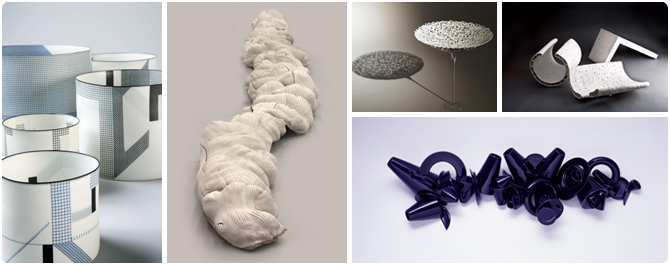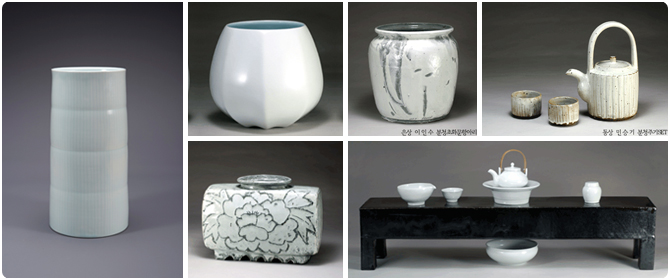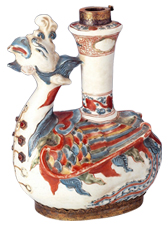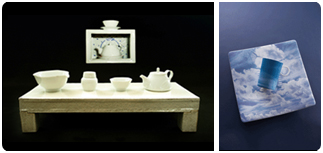서브메뉴
본문내용
A total of 1,436 artists from 66 countries submitted 2,444 works for the competition.
Twenty-six prize-winning works were selected through the preliminary screening and final screening with actual works.
The jury consisted of five experts in each respective field, and it selected
‘Architectural Volume’ by Bodil Manz, a Dane, as the grand-prize winner after heated discussion.

The five-member jury selected 50 works from among 463 entries to the competition through preliminary and final screening to award them honorary mentions and prizes.
The fifty selected works were largely grouped into porcelain, celadon, buncheong, poly-glazed ware, and earthenware, which were further divided by material and production method and design pattern, so that traditional elements and modern applications could be compared and searched.

This exhibition aimed to discover the position of Asian ceramics in four-thousand or five-thousand history of civilization.
Connoting the meaning of reshaping Asia with the earth, the skin of Asia, like shaping a vessel with clay, the skin of planet earth, the exhibition highlighted the distinct traditions and diverse cultures of Asia from new perspectives through ceramics.
Through the reinterpretation of the long history of handicrafts and diversity of Asian ceramic archetypes, the exhibition suggested new issues on ceramic art of Asia.


- This exhibition intended to examine the interchanges of ceramic culture between the East and the West through traditional Turkish ceramics and export porcelain of the East, now in Turkey, the country which stood at the middle of trade and the flow of world ceramic history from the East to the West.
The exhibition was composed of two parts.
The first part showcased 80 pieces of export porcelain from China and Japan which are in the collection of the Topkapi Palace Museum.
The exhibits well showed the ceramics trade between the East, which possessed the advanced techniques of porcelain production, and the West, which yearned after profit and high cultural standards.
The second part featured traditional Turkish ceramics of Asia Minor, the foundation of today’s Turkey, by period and by region, and looked at the impact of East Asian culture on them, such as the Chinese export porcelain.
Ceramic House III was designed to fully show ‘ethnic style,’ the key word for contemporary designs in fashion and interior, by presenting diverse and distinctive styles of different parts of Asia.
Representative ceramic wares and items of Asian countries and Korean ceramic tableware from onggi to white porcelain were displayed.
Spaces of diverse Asian styles were ornamented not only with ceramics but also with Asian furniture, textiles, wall finishings, and so on, adding all the more excitement and fun to the show.


- Presented at this exhibition were ceramic vessels that bring comfort to us in everyday living, the vessels that make our spiritual world rich.
This exhibition was intended to show ceramic vessels that inspire meditations in different religious environments such as Buddhism, Roman Catholicism, and Confucianism; what role these vessels play in meditation; and how to use these vessels in everyday living.













 Gyeonggi Ceramics Biennale
Gyeonggi Ceramics Biennale






























